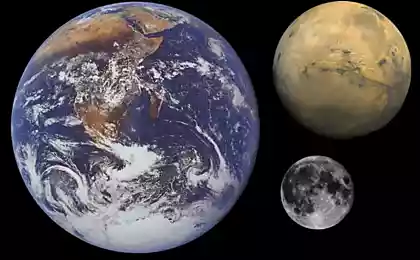No, a great human lifespan will not destroy our planet
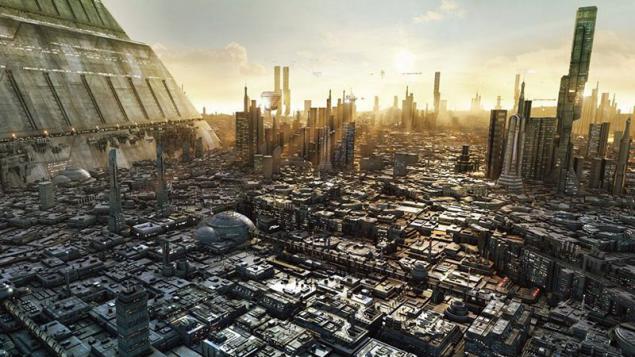
One of the problems - only a matter of time. And preparing for a radical increase in life expectancy has already begun, driven by fears of overpopulation and the depletion of our planet's resources. But critics believe that the long-lived humanity very quickly make the planet unfit for habitation, are wrong. And here's why.
Yes, it will take quite a while, but in the end, a method for slowing the aging process will be found. Thanks to advanced medical, regenerative and cybernetic technology, people of the future will come to a "slight aging", a condition characterized by an almost complete cessation of aging and the onset of "eternal youth". It sounds utopian-optimistic, but, as has often been noted biogerontology Aubrey de Grey , this is just a technical problem, are not insurmountable.
This view is not new, the debate has been going on for many years. And almost everyone can be used both for and against such opportunities . We will not examine them all. But, without a doubt, the most prominent argument against radical life extension is the issue of overpopulation and environmental sustainability.
Indeed, the constant growth of the population on a limited planet seems to be something absurd and suicidal. Where everyone together? And how to ensure basic human needs such as food, water, shelter, health care and education? And how do do it all clean and reliable way?
Leaving aside all the other arguments against radical life extension, we need to approach these issues with a view to the future. You have to understand that there is a very real possibility of developing solutions that would help cope with the ever-growing population. Remember, that it will be at that stage when we stop aging i>. And it is not so small feat! So now difficult for us to imagine how to change our society, our morals, what we will be able to go.
When we stop aging, we also completely mastered human biology, create cyborgs get super-powerful AI, and along with the ability to convert matter into clusters anything. Will also be addressed basic energy needs, while today we have to deal with such nonsense as the clock for the winter. And, of course, we will go into space and cyberspace.
Constant population growth on a limited planet? H4> Overpopulation and environmental sustainability - the problem is not so much the future as the present. We can not deal with these things now i> - so we shifted it on to future generations, even though it sounds selfish. In fact, to date, 870 million people are chronically hungry. As EO Wilson said, we need four planet Earth, to raise the standard of living of all mankind to first world standards. Finally, it must be admitted that global warming is taking place.
The dispute about the great life expectancy seems ridiculous in light of all this. It is difficult to imagine such a radical change as our technologies and social institutions are not ready for this and generally busy with other problems. Therefore, we tend to reject such a development path.
But as noted recently Anneli Nevits, fear of a population explosion is mainly due to still exists in society neo-Malthusian over - a relic of the past hysteria "green revolution". The UN estimates that by 2050 the world population will reach 9, 3 billion. After another 50 years, humanity will reach $ 11 billion (today we have 7, 2 billion). These calculations do not take into account the possibility of extending life, but indicated such an interesting trend: the more women access to education, work, and especially to birth control, тем fewer children they have . It is expected this trend is continuing in connection with economic and cultural globalization across the globe.
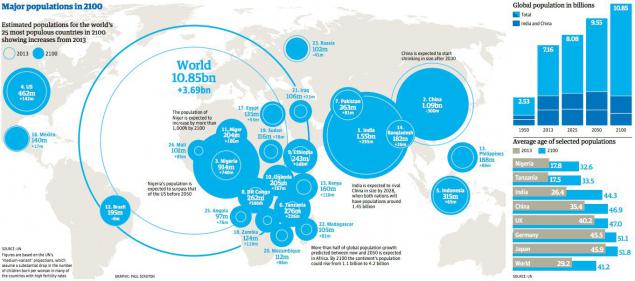
Nevits also points to another interesting - and often overlooked - fact. Rather than talk about eugenic restrictions on reproductive rights (such as the one-child policy, or the mixing of contraceptives in the water) or maintaining a hungry existence within specific countries and regions, we have to adapt the political and social laws to address these issues - for example, invest in education, agronomy and resource-saving initiatives to develop clean and renewable energy sources.
The world has changed h4> Without a doubt, the spread of radical increase in life expectancy will forever change the society. But, as mentioned earlier, mankind will be forced to reform and adapt the environment, the resource base and demographic policies. However, the continuous growth of the population, even if it is slow due to socio-economic factors, it is still continuous population growth i>. We will have to find a solution to the problems of resource depletion, pollution and reduce the space for life.
Fortunately, in the near future is expected to progress in biotechnology (including genetic engineering and regenerative medicine), nanotechnology, artificial intelligence, cognitive science and space technology that would significantly increase the chance of resolving the problems listed above. In the next few decades, when we finally step into the next era, humanity will reduce its negative impact exerted on the planet.
How to feed all? H4> Take, for example, the potential of nanotechnology in the field of molecular assembly. Futurist Michael Anisimov explains:
For example, a researcher Eric K. Drexler already expressed strong arguments in support of very inexpensive nanotechnology and 3D-printing that will synthesize cheap food and building materials. This technology can also be applied in the construction of cheap spacecraft that would allow millions of people to colonize the solar system. Marshall T. Seveydzh in his book « Millennium Project » estimates that in the solar system could fit more than a billion people with its own apart from each for several billion years. But in this book examines the role of many modern perspective nanotechnologies and virtual reality technologies. Blockquote>
Undoubtedly, something like that replicator from Star Trek i> would dramatically changed the situation. We would literally be able to create a meal from any matter.
Of course, you should not rely on something so conceptual as molecular fabricators, though some experts predict their appearance in the next few decades (mainly based on our current successes with 3D-printing and various nanotechnology breakthroughs).
Now we need to find a better way to keep the population growth. In fact, we clearly have gone astray, if we hope to feed all 2050 . But as recently said Ramez Naam futurist, something we can do today, an example to support the growth of developing economies and the increasing use of genetically modified crops (for greater productivity, protection from pests and less need for fertilizers). Food is not easy, and it must have an appropriate priority.
Where do I get so much energy? H4> Besides the food, and we have to admit the existence of problems with energy. But there is a "light at the end of the tunnel».
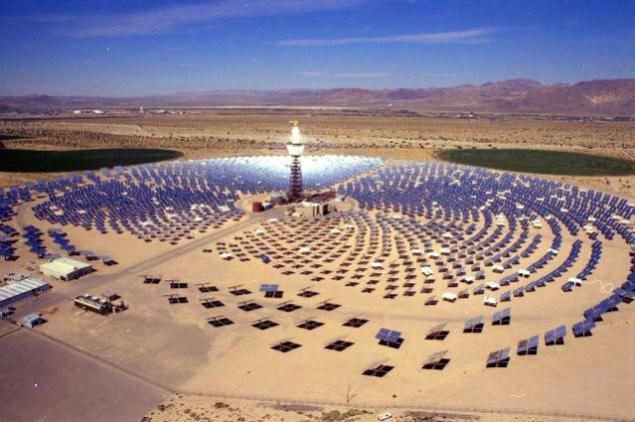
Expected technical progress will bring a concentrated solar energy and distributed systems to obtain it by means of lenses and mirrors. As soon as this technology becomes widespread, it will be possible construction solar power plants that produce gigawatts of energy . At the same time they also serve desalination stations , which will help solve the problem of shortage of drinking water. < br />
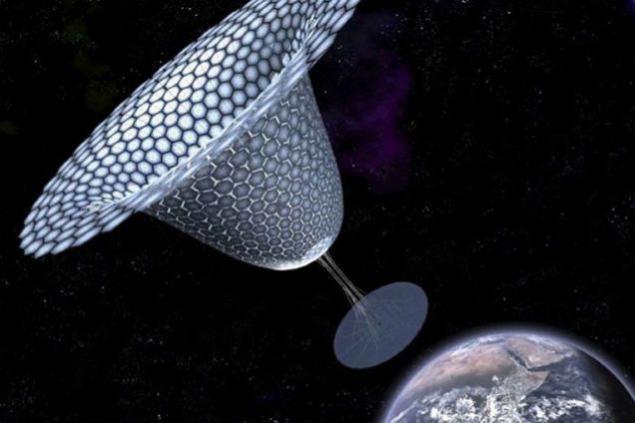
It is possible that solar power from space even greater potential. And it is more useful to us, as if progress will continue at the same pace, by 2030 th year, we need 220 trillion kWh per year. By the end of the century consumption will increase by four times. Energy derived from space using solid wood and transmitted to the ground wirelessly to become a turning point in the evolution of mankind.
Where to settle all? H4> Around overpopulation hovers something like the myth about the lack of free space. But the problem is not so much in this as in unjustified amount of our impact on the Earth. If we manage to reduce it, the population will not matter (because the place is actually a lot).

The most promising areas - arcology and pyramid cities. For example, 4, 5 km Pyramid Shimizu Mega-City would be 14 times higher than the Great Pyramid of Giza, and is able to accommodate 750,000 people in the Tokyo Bay. It is made of lightweight carbon fiber, it will house research institutions, shopping mall, restaurants and private homes. Electricity it will receive from the sun and wind. Also looks very promising marine arcology and морские dwelling in general . Or we could all go underground .
Thinking about the future, it is clear that we must move forward in space exploration. This project is good not only as a method of dealing with overpopulation, but also as a "fallback" in case of planetary scale cataclysm on Earth.
There are opinions on the need to colonize the Moon and Mars, and eventually people will be able to terraform Mars, and Venus . There are even some futuristic projects such as the creation of conditions for life in the Dyson sphere (massive structure, enveloping the Sun). Use of interstellar space also can not ignore the.
Finally, there is also the prospects of a posthuman future in terms of трансгуманизма. If the hypothesis of consciousness boot will hold true, it would be possible to opt out of the imperfect biological bodies and download our minds into a digital world where restrictions will apply only to computing power. If, however, a load do not succeed , all still have возможность genetic and cybernetic body and mind changes . And maybe even get to create a skin capable of photosynthesis.
Drastic increase in life expectancy is inevitable, it is a culmination of Medical Sciences. And instead of empty disputes better to join forces in creating solutions to help in this process, to avoid destructive consequences.
Source: geektimes.ru/company/airbnb/blog/242246/
























